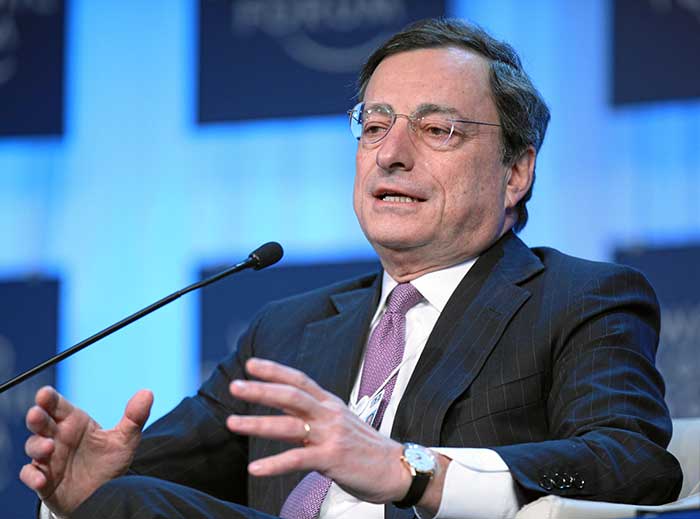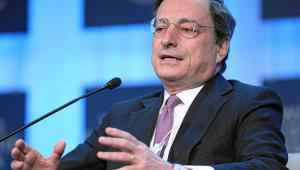web_mario_draghi_-_world_economic_forum_annual_meeting_2012.jpg

Mario Draghi, president of the European Central Bank
In a much-awaited update on the future of its extraordinary monetary policy, the bank removed some phrasing from its guidance, suggesting a further decrease in inflation rates is unlikely.
It’s a move that many will perceive as yet another sign of the eurozone’s strengthening recovery, but Draghi warned that the bank’s targets are some way away from being reached and consequently its stimulus policies are likely to continue at current levels for some time, at least into next year.
“Nothing substantial has happened to inflation other than [changes in] the oil price and the food price,” he explained.
“At the same time, since we have stronger confidence in the path of inflation convergence, and we’ve seen that the tail risks of deflation have definitely disappeared, we felt confident removing the easing bias as far as the interest rate is concerned.”
However, he added there is still room for a rate cut if the situation worsens again.
The bank is targeting an inflation rate of close to, but below, 2%. This came in at 1.4% in May, following on from 1.9% in April and 1.5% in March.
This is close to the ECB’s target, with April’s figure even sparking some concern the rate was rising too quickly, but Draghi pointed out that continues to be largely due to temporary factors such as higher oil and food prices.
The ECB is instead targeting an increase in underlying inflation, which is not affected by such factors, and has remained largely flat. It also wants any pick up to be sustained, not reliant on ECB support and evident across the entire eurozone.
Progress towards this target, he continued, remains predicated on the “very substantial amount of monetary accommodation” the ECB currently has planned. In fact, the bank cut its inflation forecasts for this year and the two ahead.
As a result, Draghi reaffirmed that the bank’s quantitative easing programme, consisting of €60bn per month in bond purchases, will continue until the end of the year, or beyond if necessary, with its extra-low interest rates also remaining unchanged.
While a series of small but significant changes to the ECB’s language have prompted speculation that the bank is moving towards normalising its policies, Jennifer McKeown, chief European economist at Capital Economics, said this still remained a “more distant prospect” than some think.
As indicators improve, the bank is coming under increasing pressure to change its controversial policies which some believe have negative consequences for certain countries and groups.
Yesterday, however, Draghi stressed the role they had played in the bloc’s recovery: “It’s because of quantitative easing. We are here because of that. Quantitative easing has supported the economy throughout.”












